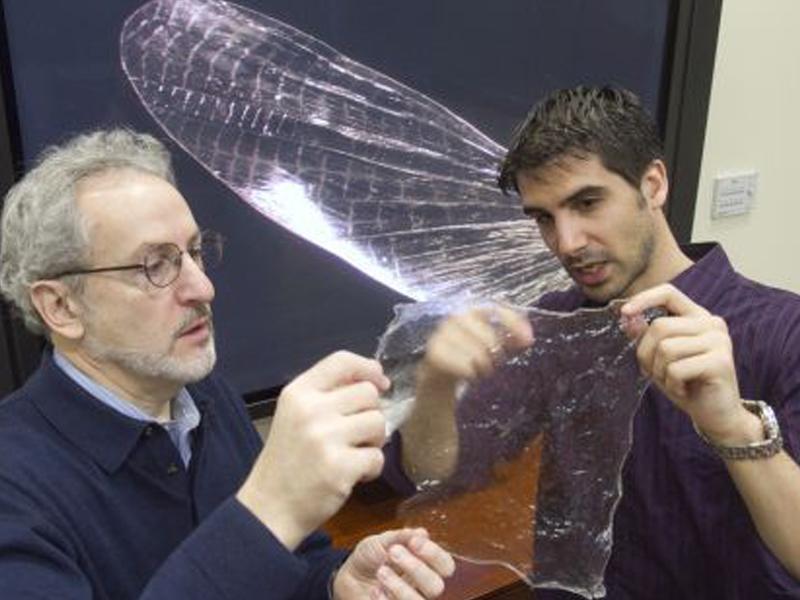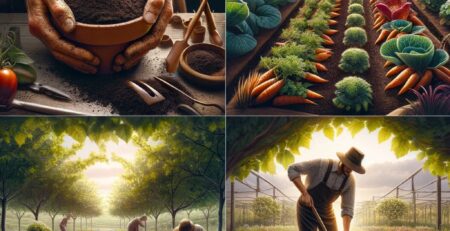Farewell to plastic is in the shell of an insect
Saying goodbye to plastic is a concern of today's society for avoid contamination of soils and aquifers. And to prevent the microplastics reach living organisms. Important legislative changes in this regard have already been adopted by institutions such as the EU. However, it is not enough. These must be combined with research to find new materials that adequately replace it due to its advantages and without its drawbacks.
Fortunately, there are already relevant advances in this regard. A Spanish scientist from Harvard is one of the world's leading experts in chitosan. This is a biodegradable material which opens a promising scenario in industry and medicine. An interesting alternative to saying goodbye to plastic.
En Crickwoo We are very interested in environmental care. Thus we understand that the awareness from childhood and scientific research are two of the great pillars on which the protection of the planet is based.
For this reason we are aware that finding alternative materials for a goodbye to real plastic It is good news for everyone.
Chitosan, the material that will help us say goodbye to plastic
“Many plastic objects, such as disposable items or packaging, are manufactured without thinking about their useful life. If, for example, I make a bottle of water, I can't chase you to put it in the appropriate container." These are the words of Javier Fernández, doctor in Nanobiotechnology from the University of Barcelona, researcher at Harvard and professor at the Singapore University of Technology and Design. This scientist with a career focused on reducing plastic consumption has his own bet: chitosan.
Javier Fernández now has three scientific publications on the chitosan properties. This biodegradable material could retire plastic and open new avenues of research in medicine, industry and 3D printing.
First research on chitosan to say goodbye to plastic
For its first post, published in Advanced materials In 2012, the researcher literally locked himself, as he says, in the Harvard Zoology library. He did so to thoroughly study the shells of insects and crustaceans. Thus, he found the foundations to create the shrilk, a mixture based on chitosan and fibroin.
Chitosan is a material naturally present in crustacean and insect shellss. And fibroin a silk protein. Therefore, both natural materials and those from insects.
“An insect's skin is made of chitosan, proteins and, on the outermost part, there is a waterproof wax-like layer. Chitosan and fibroin combine to provide the skeleton with rigidity in the wings or elasticity in the joints,” explains the scientist.
To illustrate these properties, the researcher cites the case of Rhodnius Prolixus, a common insect in Central and South America. “It is able to control its rigidity, such as when it inflates to absorb blood from other species.”
Thus, the researcher reproduced this same structure of insects in nature to design a shrilk who owns a strength that doubles that of plastic —120 MPa— and, in addition, it is biodegradable.
Difficulties and challenges in the search for affordable chitosan
“As a result of the publication, we received many calls from companies interested in implementing the material,” explains the scientist.
On the one hand, the industry wants to say goodbye to plastic. Reduce your dependence on this material. And, on the other hand, medical companies are interested in applications ranging from hernia cure, resorbable suture, surgical glue or artificial skin. However, there was a problem with silk, which “made the process very expensive for industrial purposes,” explains the scientist.
Thus, Javier Fernández's team worked to reduce cost in the industrial branch. And finally, he found the exact formula to create a chitosan, without silk, that perfectly reproduces its natural characteristics. This second post took place in 2013, also in the scientific journal Advanced Functional Materials.
The researcher insists that they are not creating new material. “We employ microelectronics and nanotechnology techniques to design the structure and the extraordinary properties it possesses chitosan in nature in order to be able to use it for other applications,” he explains.

A treasure in the trash
One of the main advantages of the material when saying goodbye to plastic is that chitosan is very cheap. “Traditionally, we have used it as waste,” says the researcher. “It is the case of shrimp heads and shells collected by the fishing industry, most of which go straight to the trash. In addition, it is very easy to obtain, since it is the second most abundant organic material on Earth behind cellulose.”
Once in the laboratory, chitosan arrives in powder or flake form, similar to a breakfast cereal. Water and acetic acid are added to dissolve it. The protons of acetic acid react with chitosan so that the latter's molecules separate and a final dissolution of 4% chitosan in water is obtained.
“Now, what we want is to get the chitosan to recover its structure and natural properties starting from that dissolution,” explains the scientist. Thus, the process requires a second phase in which the solution is evaporated “in a very controlled manner.” “There is an exact time in which the solution becomes a liquid crystal, which to the touch is very similar to plasticine, so that it flows but retains crystal molecules,” explains Javier Fernández. Depending on the degree of evaporation, the mixture will have more liquid or viscous properties.
Subsequently, a third academic paper published in early 2014 on Macromolecular Materials and Engineering, delves into the possibilities of chitosan as a material to print large structures in 3D and make production scalable. However, today, this technique requires companies to modify their production process, so they expect further development to finish incorporate chitosan definitely.
In the shadow of plastic
In the face of so many chitosan applications and cost benefits, why hasn't your studio exploded until now? The Spanish researcher recalls that chitosan was discovered in the 19th century and that, at the beginning of the 20th, its properties were investigated to the point that DuPont chemical company preserve patents of that time.
However, the introduction of plastic, a product that the researcher describes as “the material of the 70th century”, caused research into chitosan and other materials to stop. It was not until the XNUMXs of the last century, as a result of concern for sustainable materials, that this branch of science was recovered.
A promising future
“We have rescued a forgotten material to try to use it as nature does and in accordance with the environment,” says the researcher.
A clear example is shown in this video, in which a seed planted on a chitosan surface grows and flowers in 20 days. "Chitosan degrades in the environment and we know, at least, that it does not hinder the growth of other species," says Javier Fernández.
The scientist says that “approximately in a couple of years” the production of chitosan can be on a large scale. Even so, he adds that “the use of plastic bags is something that could be easily solved from a legislative point of view, since society would not have many problems in using cloth bags”. On the other hand, the use of plastic on a higher scale “does require technological development with new materials that have no environmental impact.”
From now on, and already installed in Singapore, Javier Fernández will continue perfecting the applications of chitosan. He assures, in any case, that he will continue in contact with Harvard and MIT. In this sense, before his departure, he closed a collaboration with the department of nery oxman, a professor at the MIT Media Lab.
At Crickwoo we advocate saying goodbye to plastic, the use of biofertilizers and scientific exploration with one more step to improve the environment and achieve healthier soils.


